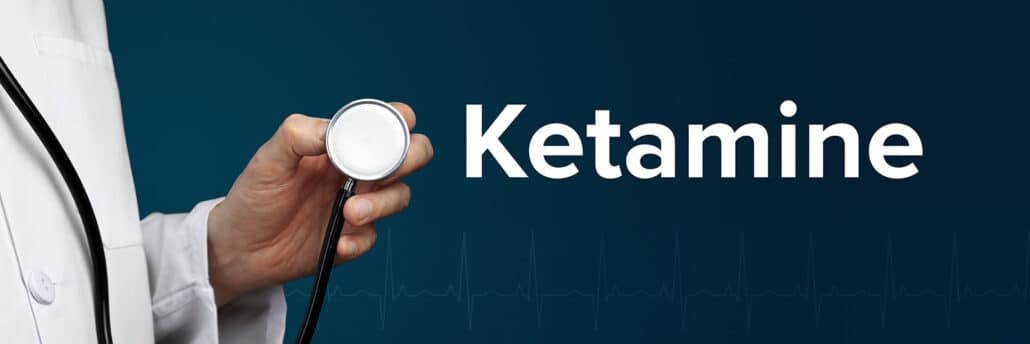Ketamine, which is also known as Ketalar, is an FDA-approved general anesthetic, but there are also some off-label purposes that doctors may prescribe it for. For example, low doses of ketamine are prescribed for pain relief related to fractures, back pain and more. It can also be used to treat status epilepticus, which is a severe epileptic disease that has life-threatening implications. Ketamine may also be used as a depression treatment for those who do not respond well to other treatments.

Table of Contents
Psychedelic Ketamine Therapy
When an individual struggles with depression for a significant period of time, the neurons in the brain may not be as effective at communicating with each other. In some cases, these individuals may not respond well to treatments involving depression medication. Ketamine has been shown to actually restore these connections when taken at the right dose. As a result, it can be an effective treatment for those who have not responded well to anti-depressants. However, ketamine can also slow neuron connections at different doses. With this in mind, you should not try to self-treat your depression with ketamine.
Psychedelic ketamine therapy for depression is available from home through telemedicine. There are several programs available to choose from, but they largely follow the same format. After an initial consultation, you will be connected with a dedicated professional who will guide you through the process and help you to safely take your prescribed doses of ketamine. The ketamine may be mailed to you before treatment begins. In addition to benefiting from telemedicine supervision during these treatments, you may have access to virtual support groups, learn through an online library and explore the benefits of journaling as part of your therapy.
Is Ketamine Addictive?
Ketamine is a highly-addictive drug that is increasingly being misused for recreational purposes. Its street names are Special K, Vitamin K, Kit Kat and others. However, even when the drug is purposefully prescribed by a doctor, use must be carefully monitored and limited in duration to minimize the risk of addiction. In 2013, roughly 2.3 million people in the U.S. had used ketamine, based on the National Survey on Drug Use and Health. This reflects an increasing trend in usage.
Ketamine alters brain chemistry and has sedative and hallucinogenic properties. It can create a blissful, euphoric feeling. However, the effects are short-lived, and an addiction can develop quickly as a user tries to chase the feeling with more frequent and higher doses. Because of the drug’s impact on the brain, speech, memory and cognitive thinking are impaired in a ketamine addict. An addict may feel dissociated and may be unable to continue living a normal life.
How Long Does Ketamine Remain in Your System?
Ketamine is a schedule III controlled substance that is available in several forms. It is commonly administered by a doctor through an IV or an injection in its liquid form. Doctors may prescribe the medication in a lozenge form for home administration. However, it is also available in a white or whitish powder, which can be dissolved in a fluid and swallowed. The powder can also be inhaled. The high from ketamine use lasts for roughly 30 minutes to an hour. The amount of time it takes for the high to kick in is dependent on how the drug is ingested.
It is important to note that taking a higher dose can result in a numb sensation. This has resulted in serious injuries for many people and has led to emergency room visits. An overdose or an interaction of ketamine with alcohol or other drugs can also produce a near-death experience or could result in death. Symptoms of an overdose include an elevated heart rate, respiratory failure, high blood pressure, muscle stiffness, paranoia and even long-term cognitive impairment.

The Effects of Ketamine
Ketamine impacts various areas of the brain, such as opioid receptors. However, one of the areas where the impact is greatest is on the glutamate system. This system allows neurons to communicate, but ketamine prevents glutamate from doing its job when it is taken at high doses. This produces an anesthetic response. However, at lower doses, ketamine actually enhances the production of glutamate. This results in a sense of dissociation and hallucinations.
If a person is depressed or coping with intense stress, the neural connections in the brain are impaired. At the right dose, ketamine may restore those connections. This is why it may be used as a treatment for those who have not responded to other depression treatments.
While the high that ketamine produces lasts for approximately an hour, a user can expect to feel the effects of a comedown for as long as 24 hours. During this time, the user may feel anxious, confused and delirious. In addition, impaired vision, aggressiveness, muscle weakness, amnesia and hopelessness are common. These effects may be more pronounced if a higher dose is consumed or if the Kktamine is mixed with other drugs or alcohol.
The liver metabolizes ketamine quickly, and the drug is ultimately excreted from the body in urine. The half-life of the drug is 2.5 hours. Many people will no longer feel the drug’s effects after 10 to 12 hours, but this could be longer. Factors like the dosage, your body mass, your age, how the drug was taken and more all play a role. This does not mean that a user will test clean within that period of time. In fact, according to the International Journal of Legal Medicine, ketamine is detectable in urine for up to two weeks and in hair for up to four months. It can also be detected in saliva for 24 hours and in blood for three days after the last use.
The Challenge of Breaking a Ketamine Addiction
While a ketamine addiction can develop quickly, breaking free of the addiction can be difficult. An addiction to ketamine is both physical and psychological. The user is conditioned to take ketamine, such as by the feelings that the drug creates in the body. In addition, a ketamine addict may experience significant withdrawal symptoms that could be impactful for up to six days. In addition to having intense cravings for ketamine during this time period, the individual could feel fatigued, restless, anxious and depressed. Other common withdrawal symptoms are chills, sweating, tremors and a rapid or irregular heartbeat.

Ketamine Addiction Treatment
There are several treatment options available for a ketamine addiction. While breaking a ketamine addiction is not usually life-threatening, the physical, mental and emotional symptoms can be challenging. In fact, symptoms like rage, cognitive impairment, a reduction in respiratory function and severe depression can be problematic. With this in mind, some individuals may benefit from supervised detoxification. During detox, you may remain in an inpatient facility for the withdrawal period so that you can be supervised and supported by a medical team. Supervised detoxification may also be recommended in many cases if there is an addiction to ketamine and one or more other substances. Medication may be administered during detox to ease severe symptoms.
After the individual has eliminated ketamine from his or her system, physical cravings and other symptoms may no longer be problematic. However, emotional and psychological factors may still be at play. For example, a recovering addict may want to continue experiencing that blissful feeling that ketamine can produce for short periods of time. Various types of therapy are beneficial after detox to address this and other challenges.
Many addiction recovery programs offer both inpatient and outpatient treatment options for a ketamine addiction. An inpatient treatment program requires you to remain in the facility around the clock for observation, support and a variety of therapy programs. These therapies may vary by facility, but they generally help a recovering addict to develop better coping mechanisms, avoidance strategies and relationships. An outpatient treatment program requires you to visit the facility each day for a specified number of hours, but you can return home in the evening. Some of these programs only require a few hours out of your day, so you may be able to continue working during treatment.

